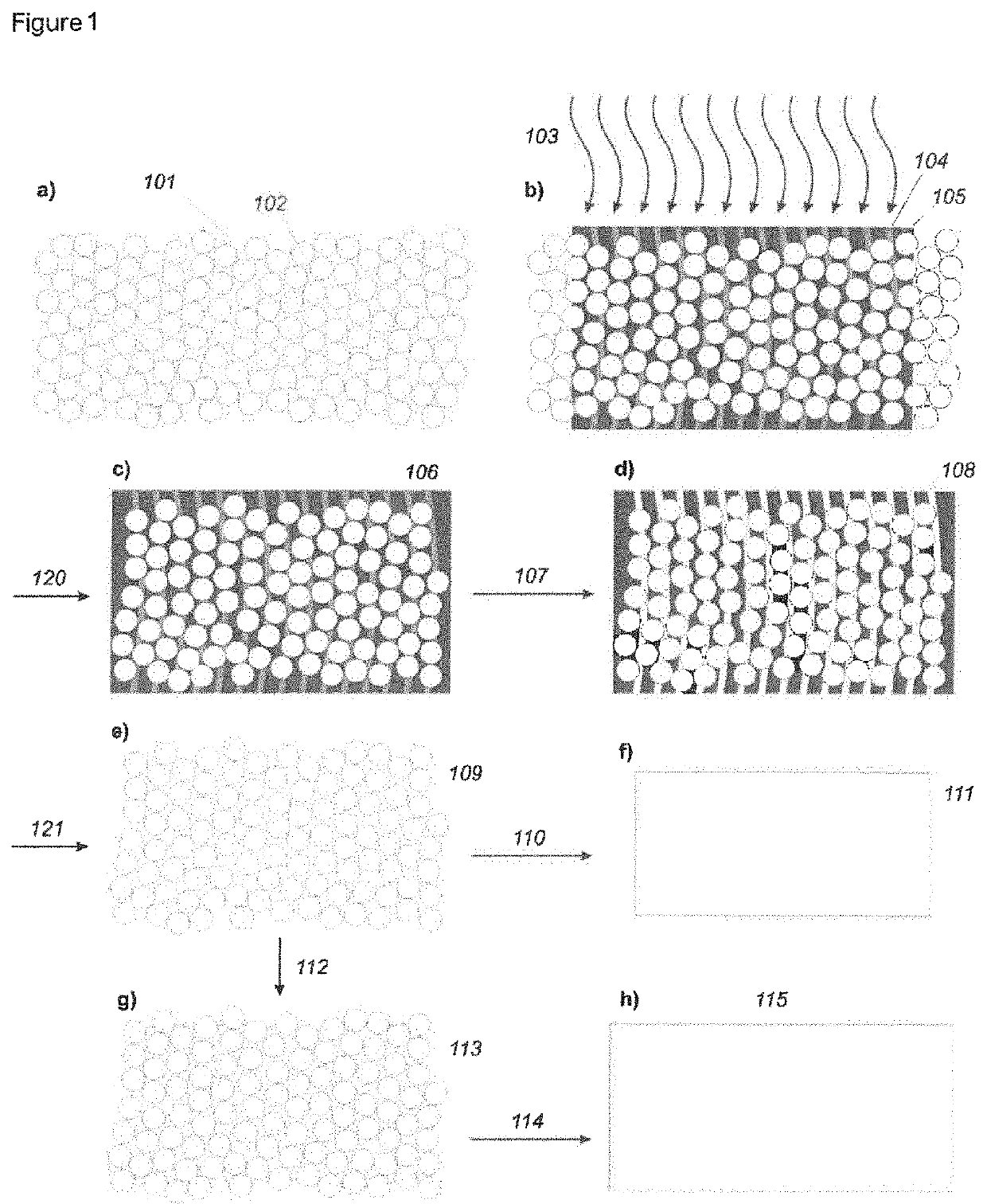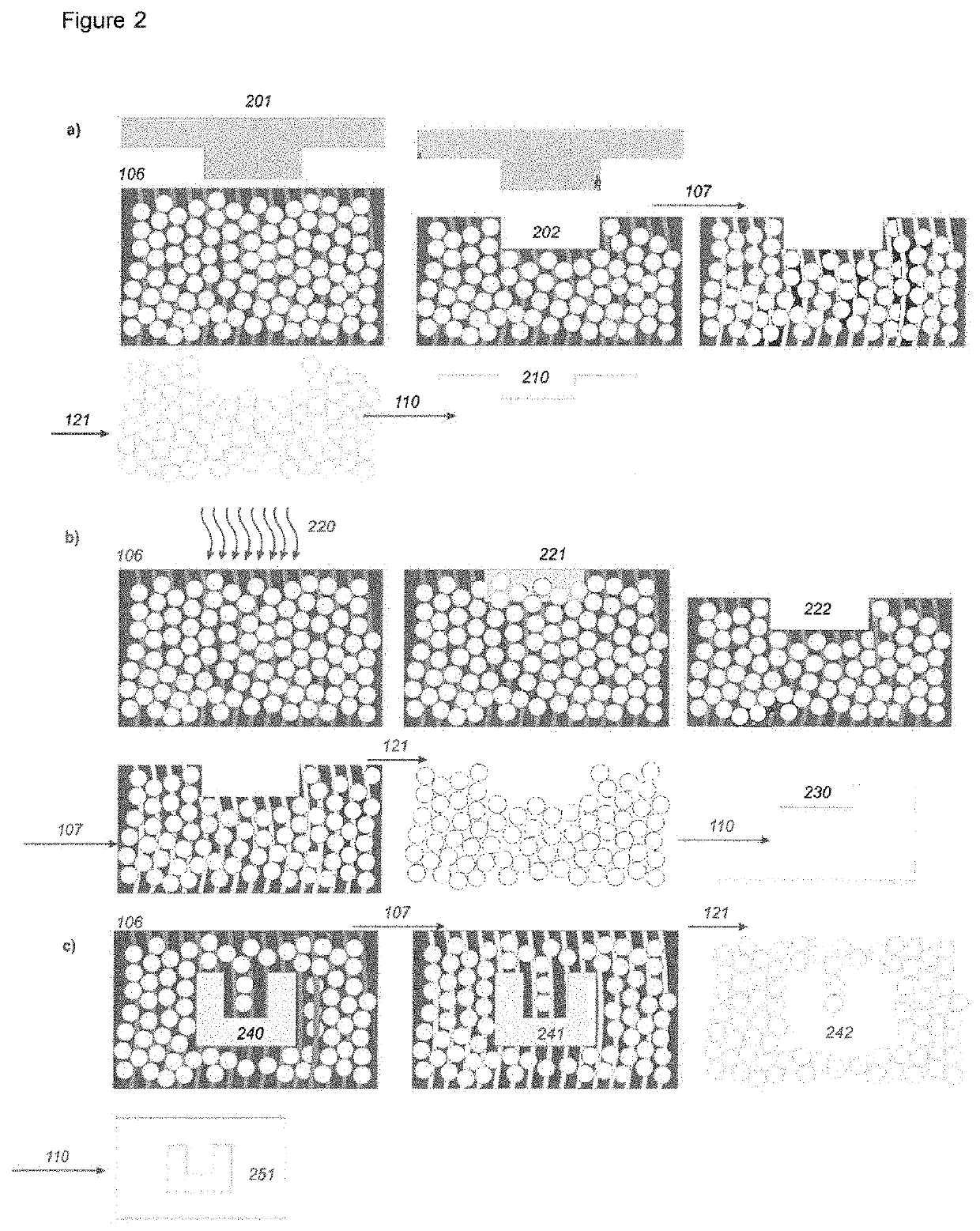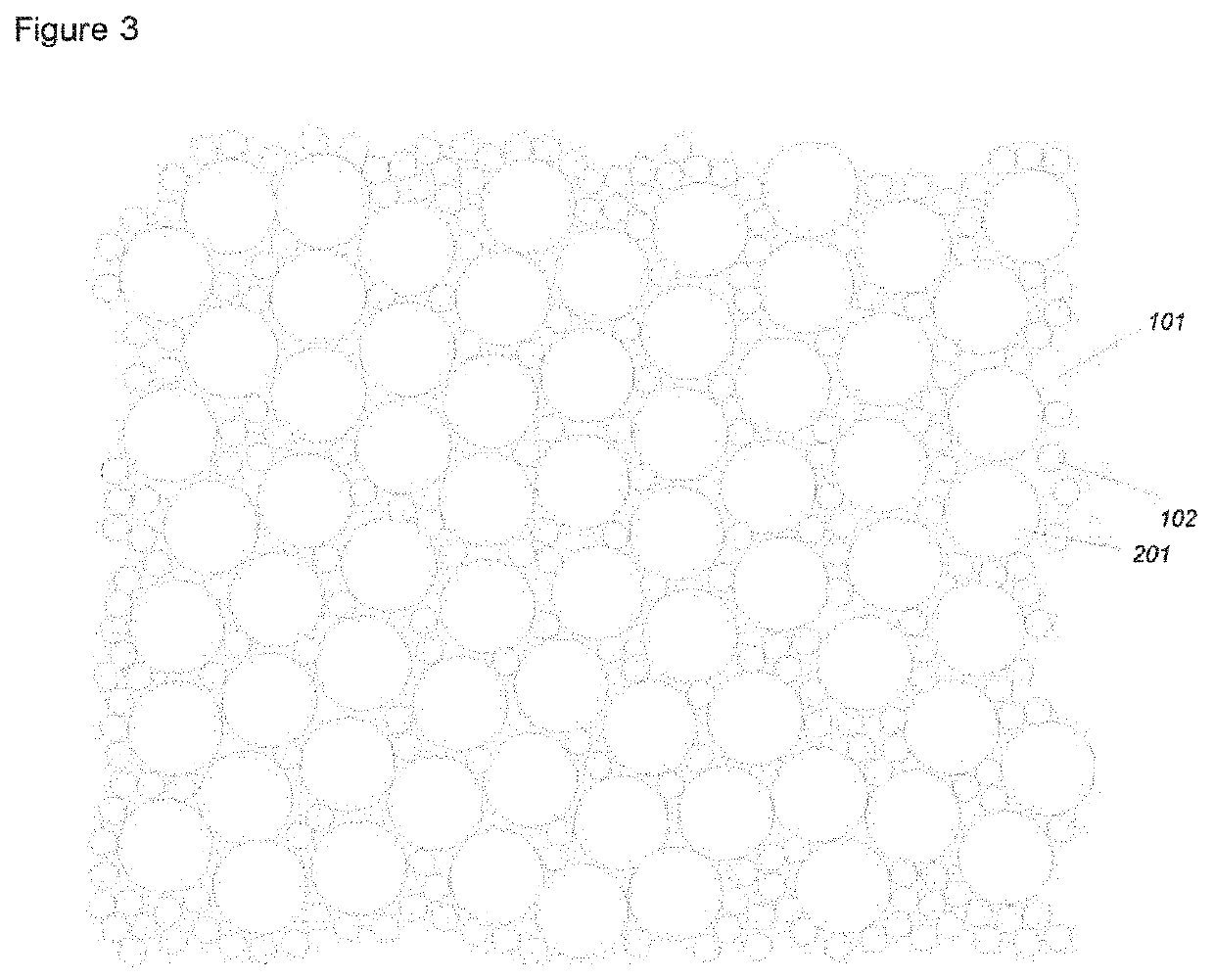Composition and method for producing a molded body from a highly pure, transparent quartz glass by means of additive manufacturing
a technology of transparent quartz glass and additive manufacturing, which is applied in the direction of additive manufacturing processes, glass making apparatus, manufacturing tools, etc., can solve the problems of limited free-form production of glass components, high process temperature requirements and resultant plant requirements, and severe local warpage of glass moldings, etc., to achieve high optical and mechanical quality and structural resolution. high
- Summary
- Abstract
- Description
- Claims
- Application Information
AI Technical Summary
Benefits of technology
Problems solved by technology
Method used
Image
Examples
example 1
[0087]A composition comprising the following components was provided in a 50 mL glass beaker;[0088]8.25 mL of hydroxyethyl methacrylate and 3 mL of tetraethylene glycol dimethacrylate as polymerizable organic binders;[0089]3.75 mL of phenoxyethanol as non-hardenable component;[0090]0.6 g of 2,2-dimethoxy-2-phenylacetophenone as light-activatable free-radical initiator;[0091]6 mg of Sudan Orange G as absorber; and[0092]25 g of quartz glass particles with diameter in the range from 10 to 100 nm; average diameter here was 40 nm.
[0093]The composition was a pale yellow, high-viscosity suspension, with viscosity about 2.82 Pas at shear rate 100 s−1 and temperature 20° C.
[0094]In the following step, the composition was structured in a conventional RP system (Asiga Pico 2, a stereolithography system, obtainable from Asiga) with use of a suitable 3D model via supply of UV light having a wavelength of 385 nm. The structuring resulted in the primary shaping of the green part.
[0095]The green pa...
example 2
f the Porous Secondary Structure with Inorganic Pigments
[0100]A brown part was obtained under conditions the same as those in example 1. Filling the cavities present in the brown part with gold(III) chloride gave a colloidal red coloration; while filling with chromium(III) nitrate led to an ionic green coloration. For this purpose, the brown part was saturated in an ethanolic solution with 0.1% by mass of AuCl3 and correspondingly, 0.5% by mass of Cr(NO3)3, and then dried at 50° C. for 1 hour. Sintering was achieved with the temperature profile from example 1 under nitrogen at a pressure of about 0.1 mbar. The quartz glass moldings obtained after sintering were in each case colored; this is also apparent in the transmission spectra (FIG. 5).
[0101]FIG. 6 shows the production of the quartz glass molding by the process of the invention, starting from the composition of the invention, as described in examples 1 and 2.
example 3
Replication” Process Modification
[0102]A composition comprising the following components was charged to a 50 mL glass beaker:[0103]12.8 mL of hydroxyethyl methacrylate as polymerizable organic binder;[0104]4.3 mL of phenoxyethanol as non-hardenable component;[0105]0.6 g of 2,2-dimethoxy-2-phenylacetophenone as light-activatable free-radical initiator;[0106]25 g of quartz glass particles with diameter in the range from 10 to 100 nm; average diameter here was 40 nm.
[0107]The above composition was hardened via supply of UV light at a wavelength of 365 nm. The resultant thermoplastic green part was imprinted by means of a conventional nanoimprint system (EVG HE510, obtainable from EVG) at a temperature of 70° C. with an imprint force of 1000 N and a retention time of 5 minutes. Removing the non-hardenable component, debinding the green part, and sintering the brown part were carried out according to the temperature profile from example 1, as described above. FIG. 7 depicts the structuri...
PUM
| Property | Measurement | Unit |
|---|---|---|
| diameter | aaaaa | aaaaa |
| diameter | aaaaa | aaaaa |
| temperature | aaaaa | aaaaa |
Abstract
Description
Claims
Application Information
 Login to View More
Login to View More - R&D
- Intellectual Property
- Life Sciences
- Materials
- Tech Scout
- Unparalleled Data Quality
- Higher Quality Content
- 60% Fewer Hallucinations
Browse by: Latest US Patents, China's latest patents, Technical Efficacy Thesaurus, Application Domain, Technology Topic, Popular Technical Reports.
© 2025 PatSnap. All rights reserved.Legal|Privacy policy|Modern Slavery Act Transparency Statement|Sitemap|About US| Contact US: help@patsnap.com



